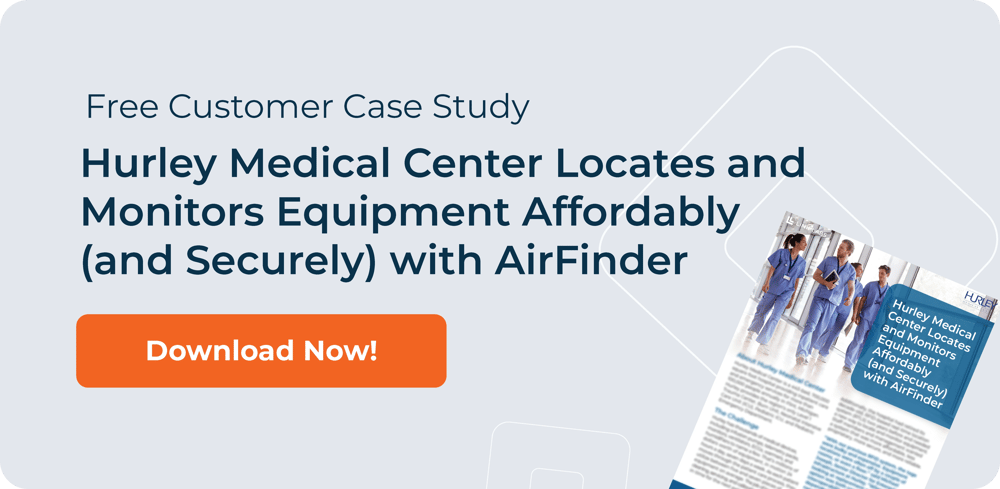Healthcare is an industry that has improved since implementing asset tracking. AirFinder is the perfect solution for hospitals trying to improve efficiency in their operations. The use cases can vary from finding equipment listed on cannot find lists to managing par-level inventory. We recently got the opportunity to sit down and chat with Jasen Thacker, our healthcare expert at Link Labs. He provided some expertise on why organizations in the healthcare space should invest in asset tracking.
The Interview
Question One: I know things have changed over time and since you started working in the field. What are some changes you have seen impact the industry?
One essential thing sticking out to me is what Link Labs is doing now. I’ll be honest; I had many meetings ten years ago in the office of a BioMed director where they asked me, “Why can’t I track this high-dollar asset when it leaves my hospital? Why can you only track it indoors?” And I’d explain to him the battery consumption needed to operate outdoors via GPS is just size prohibitive to attach when tagging a lot of hospital equipment. Link Labs has stepped up and solved many of those issues with the different SuperTag options they have released. Today we have a Rechargeable SuperTag the size of an iPod's case. This would have been mind-blowing ten years ago. Even the SuperTag as a Hub technology is something we couldn’t even imagine ten years ago.
Question Two: What about today? Are there any other trends you see in the healthcare industry?
One of the biggest trends I see now is the focus on the elder care vertical. As our general public ages, we must find facilities that can securely and comfortably house these residents with proper safety parameters. An RTLS system allows these facilities to have a low-cost entry point to gain visibility into their resident’s movement and play a part in their safety. I think it’s essential to look at because it will only grow. This is something we at Link Labs are trying to think about; how to best manage these opportunities with the elder care vertical. I am very excited to see where it goes.
Question Three: Talking about asset tracking, what else does this bring to the table for the healthcare industry?
It’s really about competing with other technology verticals. Typically, the only option in these facilities has been a wander management solution. Those systems are generally tied in with your access control, locks, elevators, and other systems throughout a building. They don’t have the visibility of where assets or residents may be because they simply are operating off a reaction to a door being opened. I’m excited to see we can now compete with different verticals in technology. Not only with other RTLS companies but other industries by solving problems in the elder care arena where competitors previously were the only option. Now we can solve many of those problems while providing additional safety measures along with the solution.
Question Four: Since you’ve been working with Link Labs and sharing what asset tracking has to offer, what has intrigued healthcare professionals about it?
Well, there’s a scale. Some facilities have never heard of asset tracking or RTLS; some are in their second or third-generation system. It depends on who you are talking to. The folks that have had two or three different systems in the last 15 years will be more interested in workflows, automation, hand hygiene, and other system functionalities that are leading-edge, cutting-edge technologies. Then there are others in the scale that may be looking into their first system, and they are just trying to manage their “cannot find” list from their BioMed department, their pm (preventative maintenance) dates, or their infusion pumps. The pain points are what we are trying to solve, and they can vary depending on the size of exposure to RTLS systems of the facilities and healthcare providers.
Join the AirFinder Difference!
- Innovation. Organizations can be freed up to innovate and bring more impactful products and services to market.
- Profitability. Increased profitability provides new opportunities to innovate and improve valuation.
- Digital Transformation. Discover competitive advantages, new revenue opportunities, improved customer relationships, and increased efficiency.
Question Five: In your opinion, which areas will hospitals see the most improvement with asset tracking?
That’s going to be another one that would be use-case-dependent. A hospital entertaining the idea of one of these systems could be for various reasons. Their pain point may be OR (operating room) throughput. Monitoring the number of devices and assets flowing in and out of the OR can increase throughput by managing asset flow. It could also be a situation with a hospital having trouble keeping up with their patient escort services and cannot locate their wheelchairs. The resources pushing those wheelchairs around can’t locate them, so they can’t manage them. It might be a use case they are trying to solve, and we can solve it by tagging the resources and wheelchairs themselves. It depends on the specific pain point a hospital is experiencing, which will be the system’s driver. It can also be a group of hospitals trying to drive value by moving assets between facilities. It depends on the pain point of a specific facility you are trying to help. That’s what would be the most significant improvement. Like the adage, “the squeaky wheel gets the grease.”
Question Six: Is there anything else you would like to add?
In closing, I want to point out that as this technology grows, it not only becomes smaller, more intuitive, and easier to use, but it becomes more affordable to customers previously prohibited by the system’s cost. I think it’s vital for facilities out there to start embracing the idea of an RTLS system because these systems should be viewed as a utility at the end of the day. Just like running water and electricity, you should be able to open your computer and see where your assets are at all times. You should be able to manage your inventory reporting at a click of a button. The days of managing inventory in extensive facilities by sending huge teams to look for stuff are archaic and wasteful. It’s not a secret healthcare involves a lot of wasteful spending. I think deploying these systems to address a facility's pain points is addressing wasteful spending. It allows these facilities to reach the hot point everybody is trying to reach: "do more with less and be more efficient.” It is excellent to say, but unless you are taking steps to do it, it will not get you anywhere. I hope facilities are opening their minds to the possibilities and what can be done by implementing a simple system like our Link Labs system.
Learn More About a Healthcare RTLS Asset Tracking Solution!
Link Labs has helped hospitals like the award-winning Hurley Medical Center with asset tracking solutions in their buildings. To learn more about their use case, download the white paper below! If you are interested in learning more about Link Labs AirFinder and how it can help your healthcare organization solve your pain points, visit our website or talk to one of our experts and request a demo.





